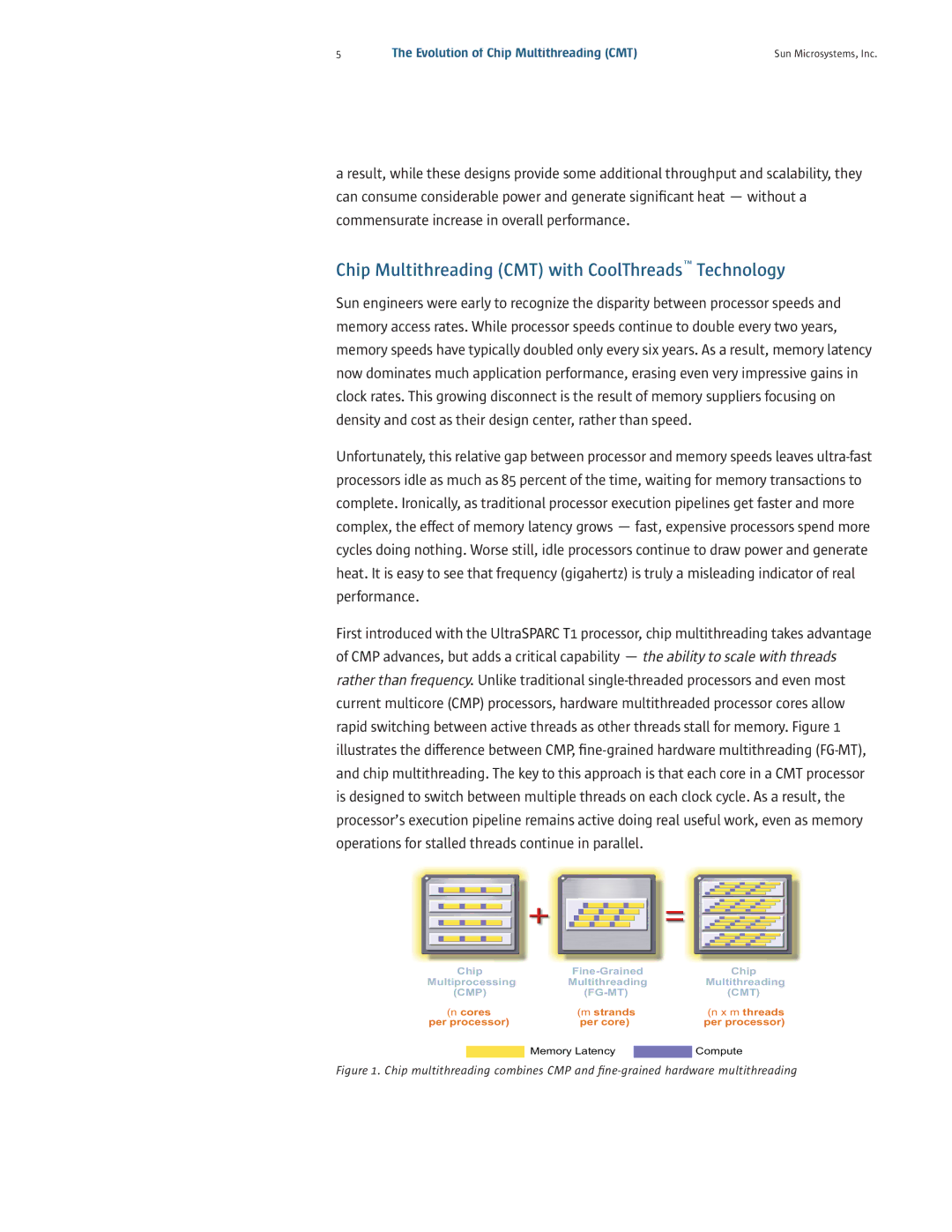
5 | The Evolution of Chip Multithreading (CMT) | Sun Microsystems, Inc. |
a result, while these designs provide some additional throughput and scalability, they can consume considerable power and generate significant heat — without a commensurate increase in overall performance.
Chip Multithreading (CMT) with CoolThreads™ Technology
Sun engineers were early to recognize the disparity between processor speeds and memory access rates. While processor speeds continue to double every two years, memory speeds have typically doubled only every six years. As a result, memory latency now dominates much application performance, erasing even very impressive gains in clock rates. This growing disconnect is the result of memory suppliers focusing on density and cost as their design center, rather than speed.
Unfortunately, this relative gap between processor and memory speeds leaves
First introduced with the UltraSPARC T1 processor, chip multithreading takes advantage of CMP advances, but adds a critical capability — the ability to scale with threads rather than frequency. Unlike traditional
Chip | Chip | |||
Multiprocessing | Multithreading | Multithreading | ||
(CMP) | (CMT) | |||
(n cores | (m strands | (n x m threads | ||
per processor) | per core) | per processor) | ||
|
| Memory Latency |
| Compute |
|
|
| ||
|
|
|
|
|
